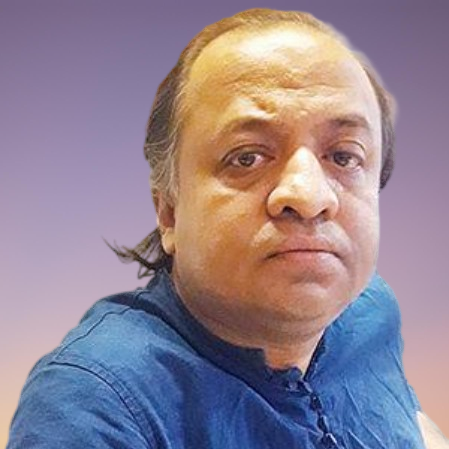Culture

Sunil Gangopadhyay
It was at a dinner at the Dhaka Club in 2007 that I met Sunil Gangopadhyay. Kobita Sankranti, a cultural organisation, was the host of the dinner. The organisation accorded him a reception in the evening at the VIP Lounge of the National Press Club. Poet and architect Rabiul Husain (now deceased) introduced me to him. Although he spoke to me warmly, the venue was crowded and I did not get the chance to talk to him at length. Fortunately, just two days later, I had another opportunity to meet him at Rabiul Husain's apartment in Dhanmondi.
Equally adept at prose and poetry, Gangopadhyay authored many memorable poems, novels, short stories, travelogues, and plays. He also brought his considerable talents to reviews, and comments as well as literature for children. In his novels, Gangopadhyay created characters -romantic, serious, eccentric, comic and loveable - to which readers readily related, while some characters became larger than life. He explored the ups and downs of urban middle-class life of Kolkata with a keen eye.
"One of the most significant chapters of my life was spent in this country, in the district of Faridpur. That's one of the prime reasons behind my tremendous fascination for the country," Gangopadhyay said in the course of our conversation. "I feel that I have a strong readership in this country because the contents of my novels have great similarities with the country's socio-economic, cultural and political aspects," he added.
I could clearly comprehend how deeply he observed our current literary trends. He was very hopeful about our poems, particularly the experimental trends and variation of the scholarly contents. He was very well informed about our literature. My impression of him has always been of a man who loved life and adored literature. He was secular, soft spoken and amicable. Although a diehard atheist he believed in equal rights for believers of all religions.
Gangopadhyay's writings are simple, easily understandable, and poignant and one can easily go through most of them cover to cover in one sitting. He was the founder editor of "Krittibaas", a seminal poetry magazine that became a platform for a new generation of poets experimenting with many new forms in poetic themes, rhythms, and articulations. His poetry is urbane, romantic, vibrant and cheeky and lends itself simply to Bohemian myth-making, which appears to have been cultivated consciously by the Krittibaas group.
Gangopadhyay is recognised for his outstanding style and alluring language. Above all, he was a poet. His series of poems titled "Nikhilesh" and "Neera" are tremendously popular among readers of all ages. He created an individual language for his essays and novels. He was a popular writer but his writings could reach the territory of the intellectual readers' circle in both Bangladesh and India. Many of his novels' protagonists appeal to the middle class of our society. He splendidly elucidates their hopes, joys, sorrows, family feuds, wants, romances and more. The stories reflect the writer's engaging prose and ability to conjure highly-fascinating stories out of most ordinary daily events. He portrays history, politics and contemporary issues in many of his poems and novels. Many of his novels are based on the history of the subcontinent.
"Ordhek Jibon" is a biography depicting his early life in Faridpur, Kolkata. It highlights his bohemian lifestyle and how he moved on to writing prose, his poetic struggles, depression and successes. His family moved to Kolkata before the Partition - a city that saw the blossoming of his talents shaped by a zeal for reading and endless adda with literary and other geniuses and with ordinary people from all walks of life.
However, it was Gangopadhyay's father, a teacher, who played a significant role in bringing his poetic talent to the fore. In "Ordhek Jibon", Gangopadhyay mentioned how his father kept him engaged in translating Alfred Lord Tennyson's poems after his school final examinations. After translating some of those poems, he considered trying his hand in writing poems of his own and sent some of them to literary magazines which eagerly published them.
Gangopadhyay's "Chobir Deshe Kobitar Deshe", is a simple travelogue recounting his journey to the land of painting and poetry. The book is about his journeys to France, the people he met there, cuisine, theatres, discussions, the culture, art and literature. In the book, he also wonderfully portrays New York - the city, its people and literary life.
Gangopadhyay's remarkable novel "Shei Shomoy" provides insights into history and its mysterious intricacies. It could easily be proclaimed as one of the best novels ever written in the historical fiction genre in Bengali. Among his other notable works are "Prothom Alo" and "Purbo-Paschim", a novel on the Partition and its effects seen through the eyes of generations of Bengalis in West Bengal and Bangladesh. The pleasures, joys and untold stories of Bengalis are the major themes of this literary work.
The writer is an art critic and cultural curator.

























Leave a Comment
Recent Posts
Right On Schedule
The most eagerly anticipated, and frankly hyped up, announcement of an ...
Fighting raged along the borde ...
Fighting raged along the border of Cambodia and Thailand, with explosi ...
ICIMOD drives regional cooperation to inspire new mo ..
The Cage of Captivity and the Cry for Freedom: A Cru ..
Why Japan issued an advisory for a possible megaquak ..
The Autocrats’ War on Universities